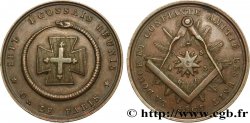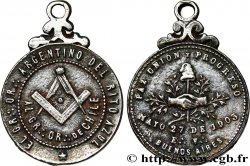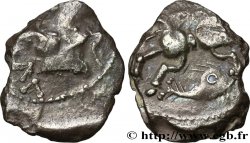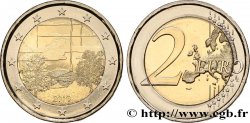- Accueil
- >
- >
E-auction 573-519514 - fjt_912141 - FRANC-MAÇONNERIE - PARIS GRANDE LOGE DE FRANCE 1994
Usted debe firmar y ser un comprador aprobado para pujar, Inicia sesión para pujar. Las cuentas están sujetas a la aprobación y el proceso de aprobación se alcanzan dentro de las 48 horas. No espere hasta el día en una venta se cierra el registro.Al hacer una oferta en este artículo usted está firmando un contrato jurídicamente vinculante para comprar este artículo y haga clic en «oferta» constituye una aceptación de los términos de uso de e-auctions de cgb.fr.
La subasta debe ser colocado en euros enteros cantidades venta only.The se cerrará en el momento en la descripción del artículo, no se ejecutarán las ofertas recibidas en el sitio después de la hora de cierre. Veces Transmition pueden variar y las ofertas pueden ser rechazadas si espera a los últimos segundos. Para más información envie el FAQ.
SIN GASTOS PARA LOS COMPRADORES.
SIN GASTOS PARA LOS COMPRADORES.
| Valoración : | 30 € |
| Precio : | 8 € |
| Oferta más alta : | 9 € |
| Fecha de fin de la venta : | 08 abril 2024 20:08:00 |
| participantes : | 5 participantes |
Tipo : GRANDE LOGE DE FRANCE
Fecha: 1994
Nombre del taller / ciudad: PARIS
Metal: metal blanco
Diámetro: 30 mm
Eje de acuñación: 12 h.
Peso: 10,95 g.
Canto: lisse
N° en los catálogos de referencia :
Anverso
Titulatura del anverso: GRANDE LOGE DE FRANCE R.:. E.:. A.:. A.:..
Descripción del anverso: Équerre posée sur un compas , au centre un G.
Reverso
Titulatura del reverso: GRANDE LOGE DE FRANCE 1894 - 1994 (CORNE D’ABONDANCE - ROSETTE DE L’ATELIER DE GRAVURE).
Descripción del reverso: Oeil dans un triangle rayonnant.
Comentario
Le centenaire s’explique car en 1894, le Suprême Conseil du Rite Écossais Ancien et Accepté délègue ses pouvoirs sur les trois premiers degrés à la Grande Loge de France ( G.L.F.).
Le centenaire avait d’autant plus d’importance qu’en 1965, devant le refus de la G.L.F. de rompre ses relations avec le Grand Orient (G.O.), un millier de Frères quittèrent la G.L.F dite Puteaux et rejoignent la Grande Loge Nationale Française (G.L.N.F.), dite Bineau, de son ancienne adresse.
Le métal est indéterminé, d’aspect nickelé mais non magnétique, la fabrication est soignée et provient de la Monnaie de Paris qui a signé de la rosette. La tranche est lisse.
La franc-maçonnerie s’implante en France aux alentours du premier quart du XVIIIe s. sous l’influence d’aristocrates anglais. Initiatique, elle est fondée sur le rite hiramique, du nom d’Hiram de Tyr, personnage biblique, architecte du roi Salomon sur le chantier du Temple et qui a résisté à la torture sans livrer ses secrets. Hiram a aussi donné un point de départ du calendrier maçonnique commençant 4000 ans avant le calendrier chrétien. Les symboles servent de signes de reconnaissance entre les initiés, notamment des outils de constructeur de cathédrales (équerre, compas, niveau, maillet, etc.), des formes (triangle, étoile), des nombres (trois, cinq, sept) et des lettres.
The centenary is explained by the fact that in 1894, the Supreme Council of the Ancient and Accepted Scottish Rite delegated its powers over the first three degrees to the Grand Lodge of France (G. L. F. ).
The centenary was all the more important in 1965, given the refusal of the G. L. F. to break off relations with the Grand Orient (G. O. ), a thousand Brothers left the G. L. F called Puteaux and join the French National Grand Lodge (G. L. N. F. ), known as Bineau, from her former address.
The metal is undetermined, nickel-plated but non-magnetic, the manufacturing is careful and comes from the Monnaie de Paris which signed with the rosette. The slice is smooth.
Freemasonry was established in France around the first quarter of the 18th century.. under the influence of English aristocrats. Initiatory, it is based on the Hiramic rite, named after Hiram of Tyre, a biblical character, architect of King Solomon on the construction site of the Temple and who resisted torture without revealing his secrets.. Hiram also gave a starting point for the Masonic calendar beginning 4000 years before the Christian calendar. Symbols serve as signs of recognition between initiates, including cathedral builder tools (square, compass, level, mallet, etc.). ), shapes (triangle, star), numbers (three, five, seven) and letters
Le centenaire avait d’autant plus d’importance qu’en 1965, devant le refus de la G.L.F. de rompre ses relations avec le Grand Orient (G.O.), un millier de Frères quittèrent la G.L.F dite Puteaux et rejoignent la Grande Loge Nationale Française (G.L.N.F.), dite Bineau, de son ancienne adresse.
Le métal est indéterminé, d’aspect nickelé mais non magnétique, la fabrication est soignée et provient de la Monnaie de Paris qui a signé de la rosette. La tranche est lisse.
La franc-maçonnerie s’implante en France aux alentours du premier quart du XVIIIe s. sous l’influence d’aristocrates anglais. Initiatique, elle est fondée sur le rite hiramique, du nom d’Hiram de Tyr, personnage biblique, architecte du roi Salomon sur le chantier du Temple et qui a résisté à la torture sans livrer ses secrets. Hiram a aussi donné un point de départ du calendrier maçonnique commençant 4000 ans avant le calendrier chrétien. Les symboles servent de signes de reconnaissance entre les initiés, notamment des outils de constructeur de cathédrales (équerre, compas, niveau, maillet, etc.), des formes (triangle, étoile), des nombres (trois, cinq, sept) et des lettres.
The centenary is explained by the fact that in 1894, the Supreme Council of the Ancient and Accepted Scottish Rite delegated its powers over the first three degrees to the Grand Lodge of France (G. L. F. ).
The centenary was all the more important in 1965, given the refusal of the G. L. F. to break off relations with the Grand Orient (G. O. ), a thousand Brothers left the G. L. F called Puteaux and join the French National Grand Lodge (G. L. N. F. ), known as Bineau, from her former address.
The metal is undetermined, nickel-plated but non-magnetic, the manufacturing is careful and comes from the Monnaie de Paris which signed with the rosette. The slice is smooth.
Freemasonry was established in France around the first quarter of the 18th century.. under the influence of English aristocrats. Initiatory, it is based on the Hiramic rite, named after Hiram of Tyre, a biblical character, architect of King Solomon on the construction site of the Temple and who resisted torture without revealing his secrets.. Hiram also gave a starting point for the Masonic calendar beginning 4000 years before the Christian calendar. Symbols serve as signs of recognition between initiates, including cathedral builder tools (square, compass, level, mallet, etc.). ), shapes (triangle, star), numbers (three, five, seven) and letters








 Informar de un error
Informar de un error Imprimir la página
Imprimir la página Comparte mi selección
Comparte mi selección Haz una pregunta
Haz una pregunta Consignar / vender
Consignar / vender
 Descriptivo
Descriptivo















